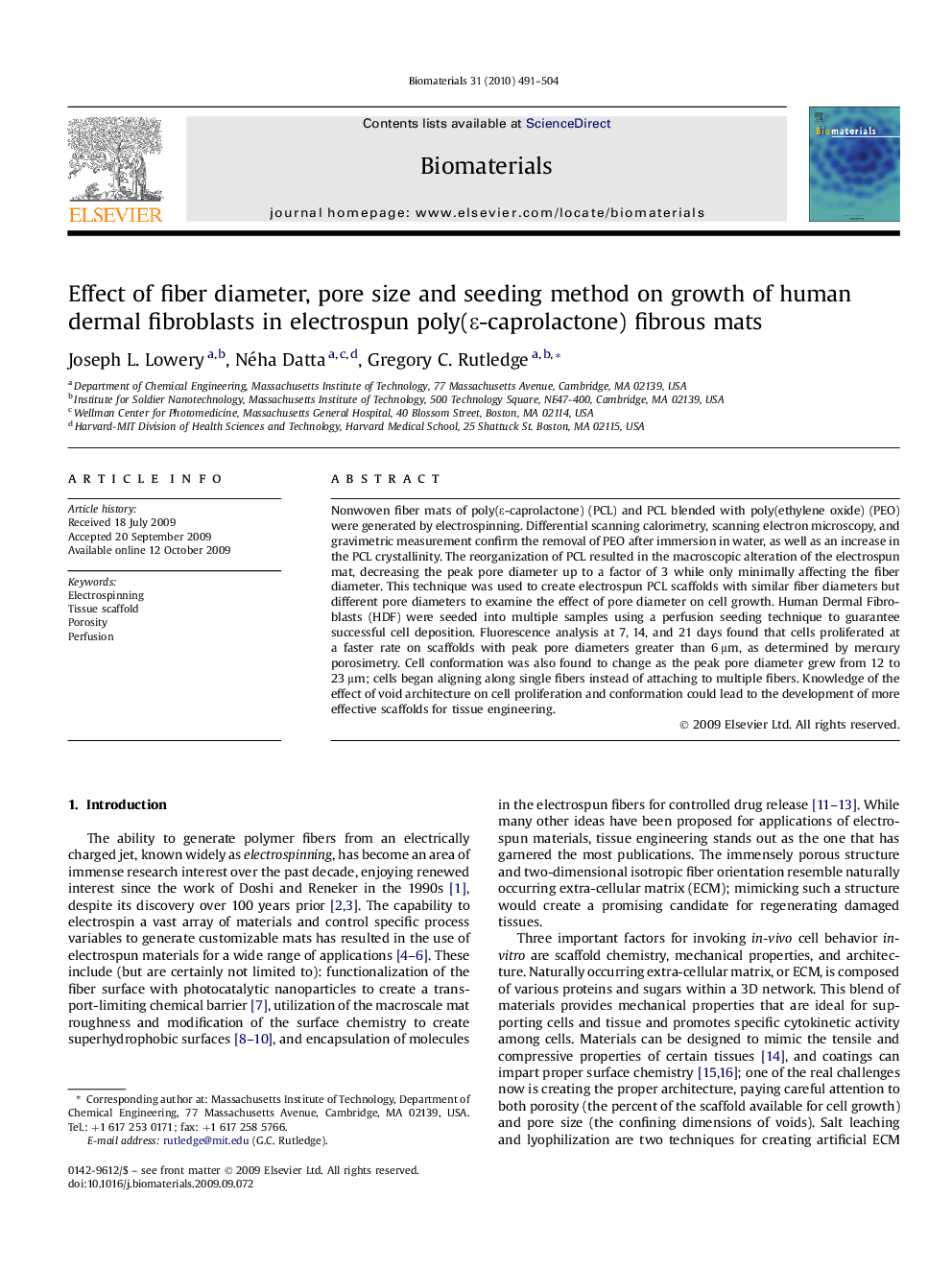| کد مقاله | کد نشریه | سال انتشار | مقاله انگلیسی | نسخه تمام متن |
|---|---|---|---|---|
| 8510 | 595 | 2010 | 14 صفحه PDF | دانلود رایگان |

Nonwoven fiber mats of poly(ɛ-caprolactone) (PCL) and PCL blended with poly(ethylene oxide) (PEO) were generated by electrospinning. Differential scanning calorimetry, scanning electron microscopy, and gravimetric measurement confirm the removal of PEO after immersion in water, as well as an increase in the PCL crystallinity. The reorganization of PCL resulted in the macroscopic alteration of the electrospun mat, decreasing the peak pore diameter up to a factor of 3 while only minimally affecting the fiber diameter. This technique was used to create electrospun PCL scaffolds with similar fiber diameters but different pore diameters to examine the effect of pore diameter on cell growth. Human Dermal Fibroblasts (HDF) were seeded into multiple samples using a perfusion seeding technique to guarantee successful cell deposition. Fluorescence analysis at 7, 14, and 21 days found that cells proliferated at a faster rate on scaffolds with peak pore diameters greater than 6 μm, as determined by mercury porosimetry. Cell conformation was also found to change as the peak pore diameter grew from 12 to 23 μm; cells began aligning along single fibers instead of attaching to multiple fibers. Knowledge of the effect of void architecture on cell proliferation and conformation could lead to the development of more effective scaffolds for tissue engineering.
Journal: Biomaterials - Volume 31, Issue 3, January 2010, Pages 491–504